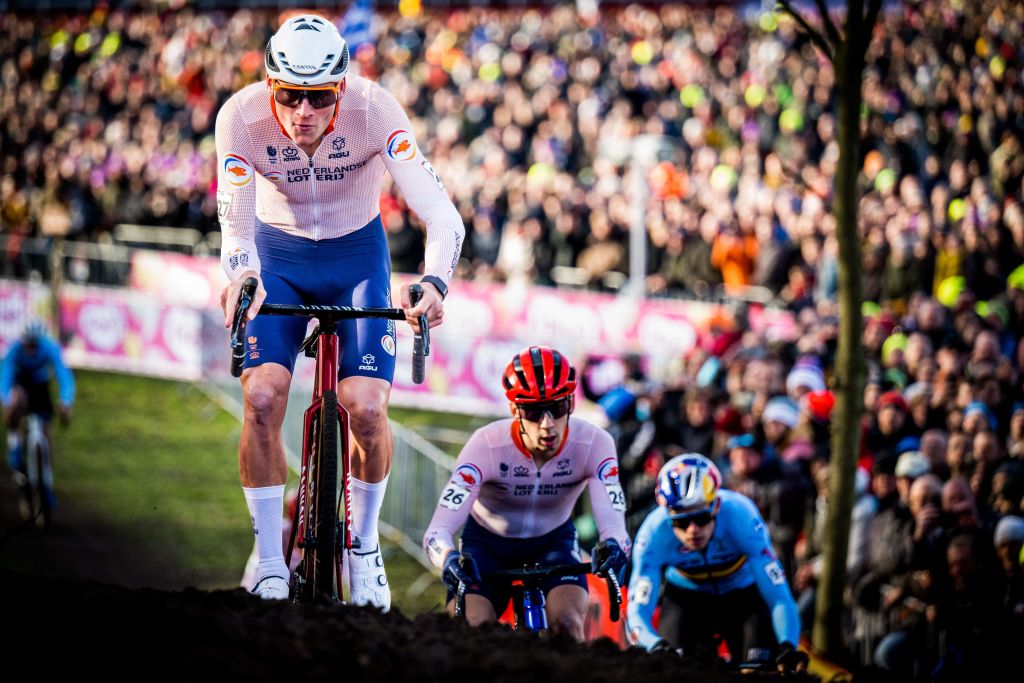
With the UCI Cyclocross World Championships coming up fast it’s all eyes on Tabor. The dominance of Mathieu Van der Poel and Fem van Empel this season has somewhat muted the discussions of potential winners, at the senior level at least, but that doesn’t mean we can’t speculate.
Cyclocross is often a little hard to penetrate, but luckily we managed to snag an expert to chat through the Tabor course, and tech decisions, and find out if anyone can beat the two favourites. Jeremy Powers needs little introduction to ‘cross fans – 90 victories and four national titles speak for themselves, but for many of us he’s also been the voice of ‘cross as a commentator.
To kick off, I asked him to give us a flavour of the course. Unlike big-name tracks like Koksijde or Zonhoven, Tabor isn’t dominated by a single surface or a standout feature, so what’s it like to race on?
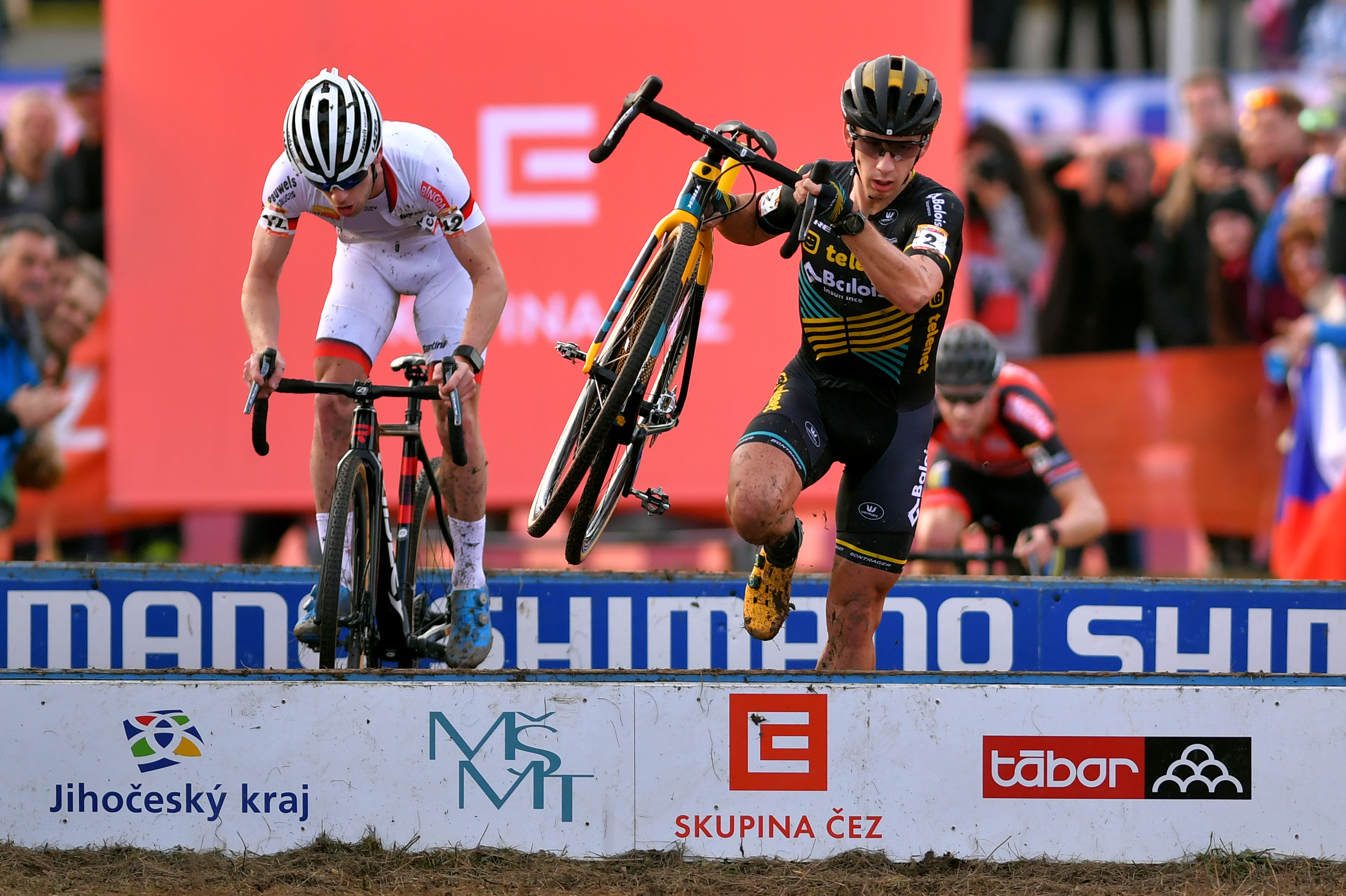
Jeremy Powers: Tabor in particular, usually, the weather is the thing that makes it unique this time of the year. When it's held as a World Cup in the earlier part of the year, it's usually drier, and it can be just a total wattage track, meaning there is nowhere that you can't just put down power. It's very wide, and you can just, you can just put power all over the place. There are the double planks that you can ride, if you have enough gas in the tank, but it depends on how they’re placed. If they're placed two inches differently you can't do it; no one can.
[Tabor has] kind of got this upper section, then there's like a big, long kind of gradient section, and then there's the lower section. The lower section also has where now there's some whoops, and kind of some jumps, which we’ve famously seen Zdenek Stybar cross before, then it kind of goes around the long side, and you've got that big hard staircase.
So where the race can be made is usually linking that staircase, right? That really long hard staircase, there's a climb after it, you've got to have a big engine, gotta get off your bike gotta hit those stairs, you've got to punch it up that section then you've got to descend this like criss-cross section, and then you have to be able to have enough gas to punch it up over those planks. And then you continue with all your upward momentum to the top part of the course.
There's no hiding on this track. Don't get me wrong, I do think that this race will be tight. But when someone decides that they're going to go, it's going to be over because you need to have the big explosivity on that section and you're gonna need to hold it together.
It will be greasy, but I've been following the weather and it doesn't look like there will be snow or ice like there could be at this time of the year, but they do think that there's going to be some northern precipitation that could potentially develop. But I think that that's not really going to deter most 'cross riders; I think most of the tyres out there will be a typhoon-type tyre. You know, the kind of half moons and chevrons.
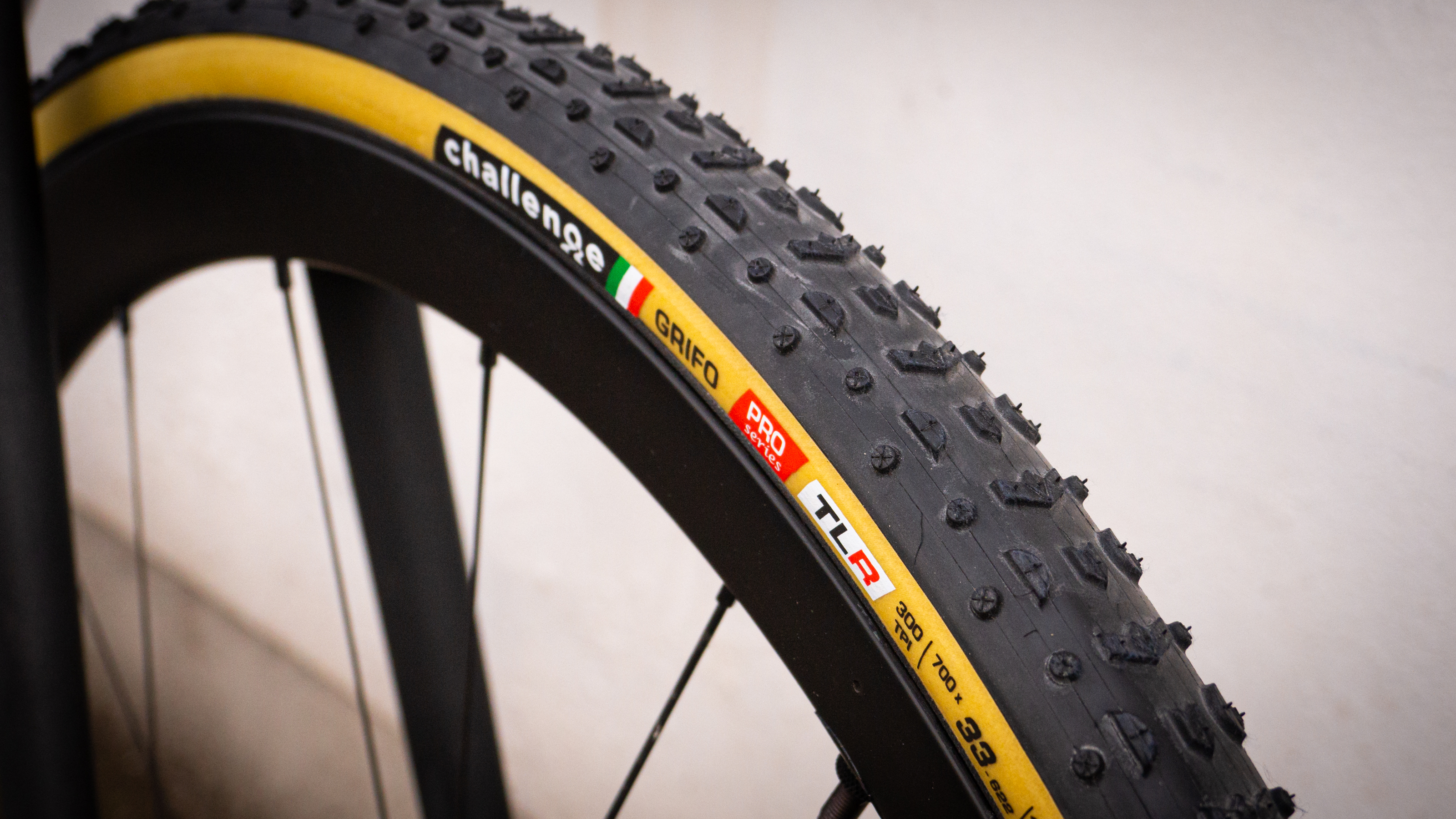
Tyre choice and tyre pressure are the dominant tech decisions, but it seems Powers thinks most riders will stick to a middle-of-the-road tyre. Dugast Typhoons, Challenge Grifos etc., depending on who their tyre sponsors are. If you want a full run-through of all the tyres that riders have to choose from we have a comprehensive cyclocross tyre guide, so feel free to get nerdy in there.
Bike swaps are part of ‘cross, and the relationship between rider and mechanic in the race is something I was curious about. I asked Powers if riders are ever swapping treads during a race, or just adjusting pressures as the race develops.
JP: You could win Koksijde [a sand race] on a Rhino [a mud tyre], you just need to have enough power to push it through. For most of the guys, they're looking at, like, how fast can I go? And what tyre do I need to go the fastest with the least amount of energy with the most amount of traction? And for 80% of the races, it ends up being a traditional - we just call it a typhoon tyre.
But there's so much nuance than that. If there's a hard compression off of a drop, then they'll want a little bit more pressure in the front of the tyre, because they don't have suspension. So they'll want that tyre to be able to take some of it, but also not fold out underneath them. So the difference between 20 psi and 21 and a half psi is actually, for riders at that level, quite significant.
Sometimes they'll start to realise that there's a turn that they're not navigating right, or there's a section they're getting dropped on, and then that's when they'll call their mechanics. The thing that’s really cool that you don't typically see on TV, or you don't really know, is that the relationship between the mechanic [and rider] is so imperative for an athlete at that level. To be able to say to them: hey, we both know where we were at before the race, we had this conversation, we both know that we're at 20 psi, but I need to go down. How much, right?
And for them to be able to, in less than two seconds, hear that information, and in three minutes have the tyres aired up so that when they come back around the next lap ready to go at that next pressure that they want. It’s quite precise.
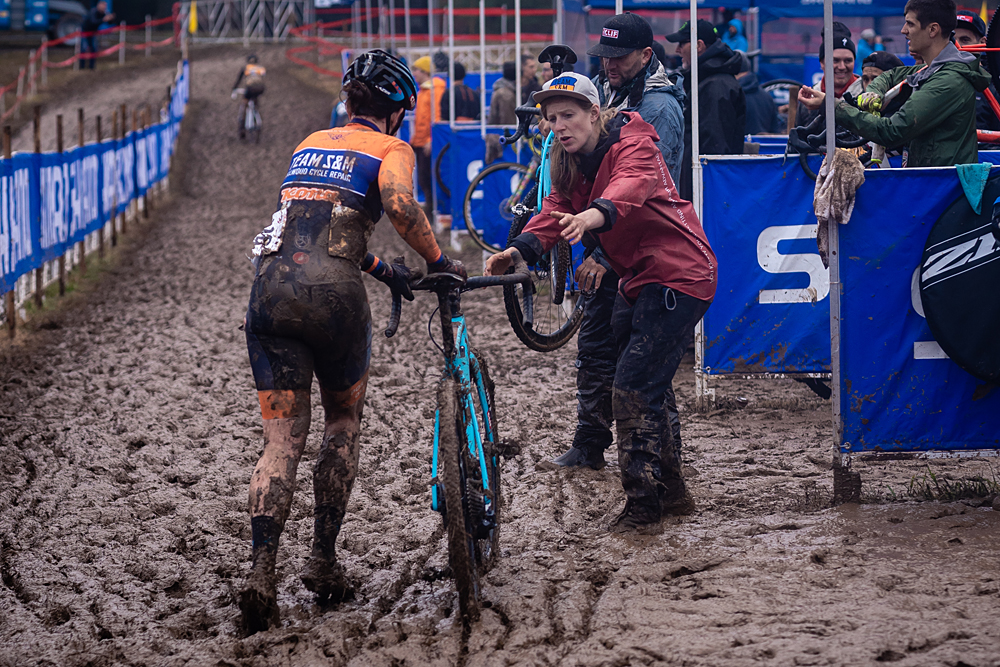
The relationship between a pro ‘cross rider and their mechanic is, it transpires, much more akin to a golf player and their caddy. The mechanic will join on the course recon, help to assess the conditions and suggest pressures based on a wealth of past experiences. They are far more than someone who simply builds and cleans the racer's machines. They’re an integral part of the race.
Given that, this year, we have two clear favourites I was curious to find out if they might run a more conservative tyre strategy. Would they maybe opt for a slightly higher pressure to avoid punctures and sacrifice a bit of grip?
JP: You have to take some risk to win a World Championship. I don't even think the tyre is the real risk. I think it's about having the right pressure and the right tyres. I think for both of them because they are like odds on favourites; for both of them it's going to be like, just staying calm, cool and collected and making sure that their adrenaline's actually working because when you're the favourite, you can often get complacent.
For Van der Poel I almost think that he's going to show up and his mechanic’s already going to know the pressure for the course, from years that they’ve done it, and knowing, and taking notes.
My sense is that you're trying to not change stuff. And if anything is changed, then the bikes are flipped over and you've ridden them all. So if you've got four bikes that come out, right, let's say you crashed one and you broke a shifter off, you come in, you still got three bikes all the same.
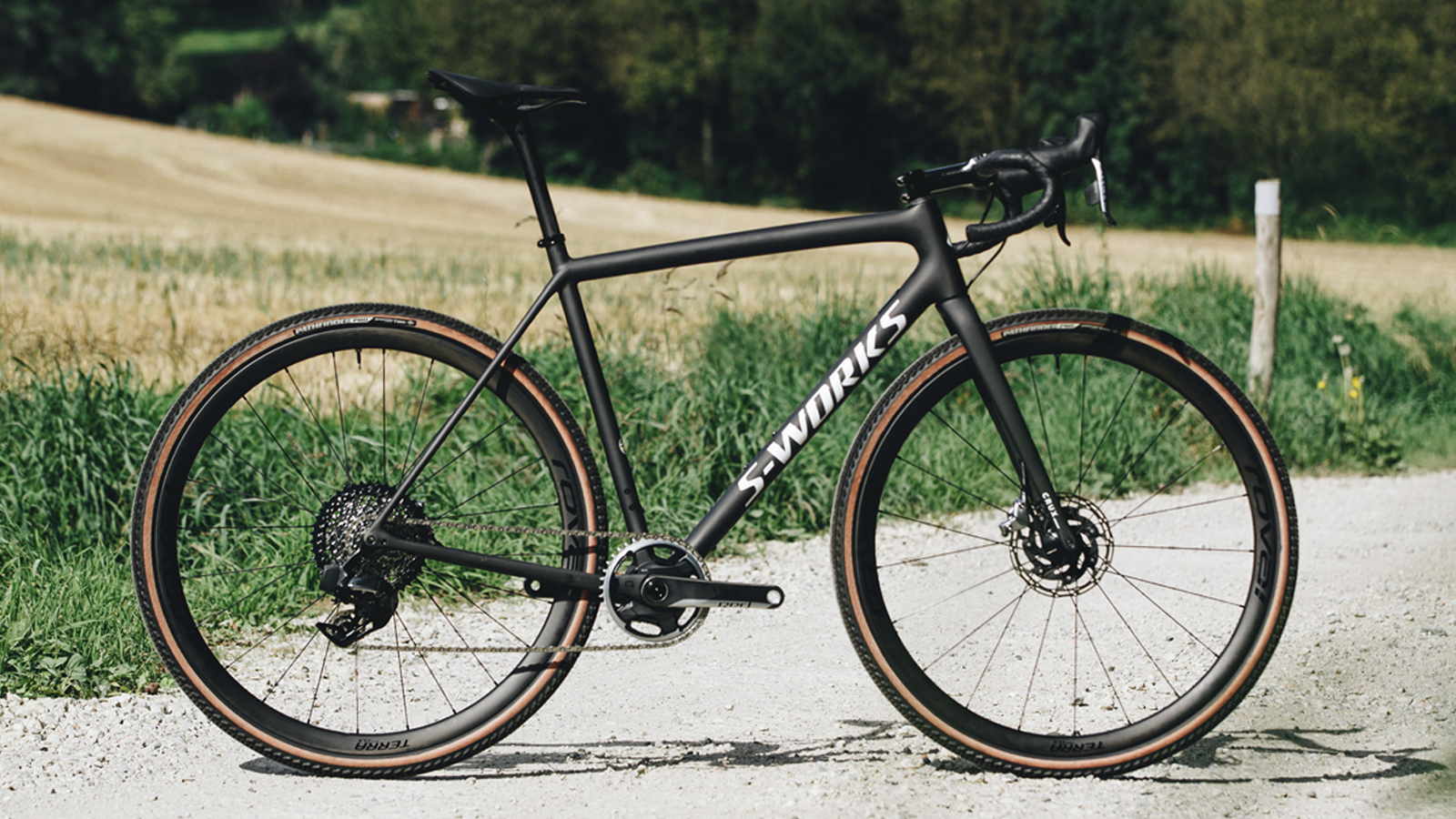
Cyclocross bikes have evolved over the years, and for a time they were essentially the only option instead of actual gravel bikes for roadies who wanted to venture off-road. Now we have former cyclocross models like the Specialized Crux being marketed as gravel bikes, and in recent weeks we saw Wout van Aert opting to use his Cervelo gravel bike at Zolder in a ‘cross race. Are we going to see gravel bikes in ‘cross races?
JP: I would be curious… It might be a question to ask Van Aert… is that he may have just had the bigger gear on his gravel bike in Zolder. If you're familiar with [the course] it is one of the only courses where you would want to have a massive 2x, or like an absolutely massive 50-tooth ring to be able to spin that whole road section because it's so wide open and flat, deadpan flat. You really want a 52t chainring with like a 48-10, and that would maybe not even be enough there, too. Wind it out like you could go 30 miles an hour. You know what I mean? I bet that's what he had on his gravel bike. And I bet it was a simplicity thing like, hey, I could just grab this without having to switch everything over.
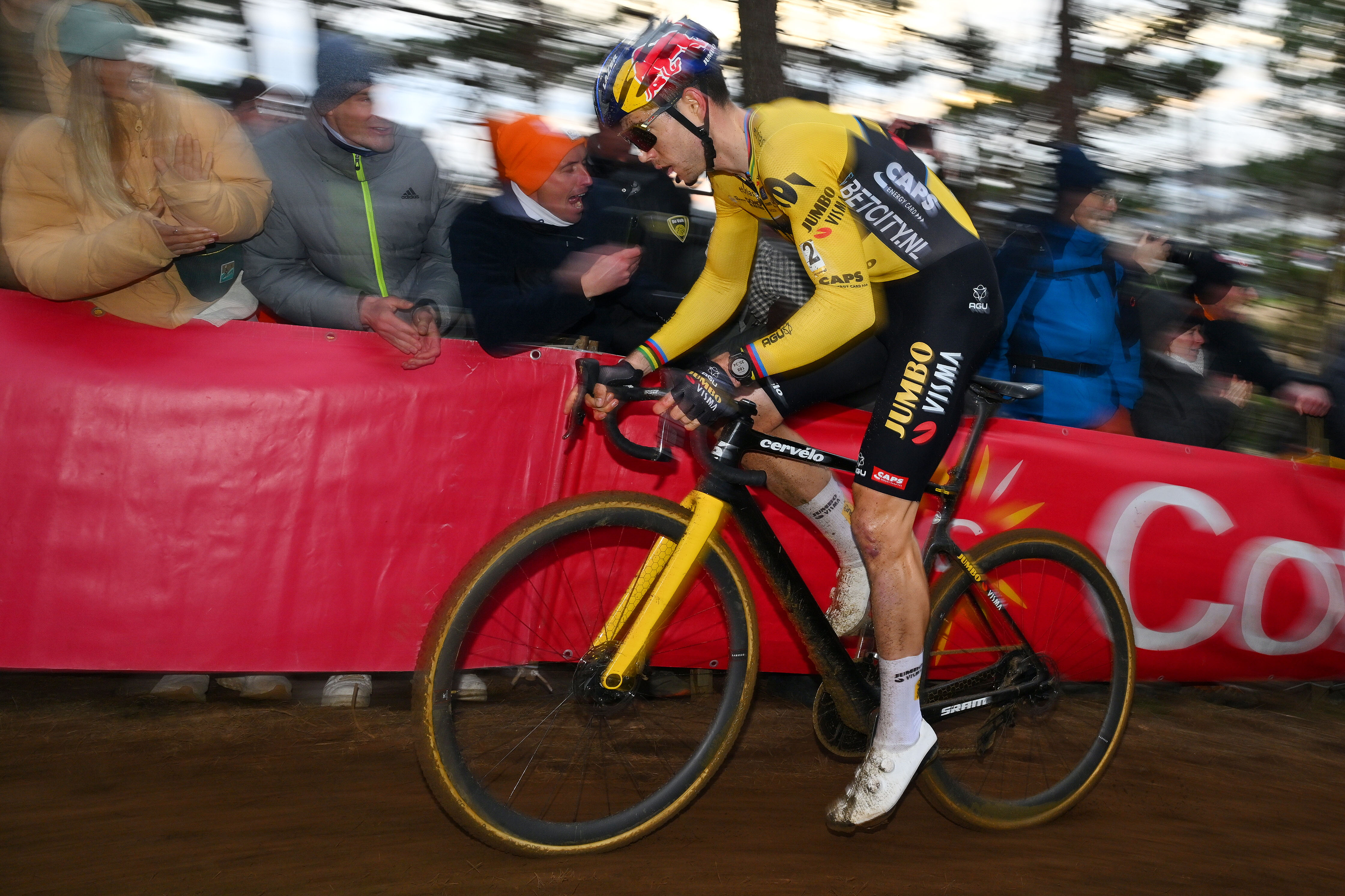
One final thing that’s always been in my mind, from a tech point of view, is how the main contenders deal with issues. If you cast your mind back to the 2016 ‘cross worlds in Zolder, on lap 5 Van der Poel and Van Aert became entangled, with Van der Poel’s foot lodged in the Belgian’s wheel. The pair fell through the field towards the rear of the midpack, and while Van Aert rallied and eventually won, Van der Poel appeared to resign himself to not winning. Is this still the case for the big names?
JP: I think that for a while, for Van der Poel, it probably was just like… the juice isn't worth the squeeze. He's such a good rider, and he wins so much that it's hard for a regular person to understand, why not stick at it? Why not be a good sport or something? But when you're Van der Poel and you're talking about hundreds of career victories. It's kind of like, there's another day to fight for this.
Rainbows are different. I would look at Benidorm as the most recent example of Van der Poel having an incident and continuing to stick in it. He could have faded through the pack. He went down due to his own error, right? He hit that huge concrete pole, and he rode a really deep race. He had to do a lot of catching up from the beginning, so he was already kind of on his limit, and he had to burn a tonne of matches. I mean, he's a cyborg, but he's not invincible. Even after the crash, he continued to stay in it. He continued to push on, trying to come back. And there wasn't enough time left to do any damage.
The truth is that he puts a lot of pressure on himself. He's really got a great head for it. Clearly, he can take that pressure. But even just recently, he's thinking… if I don't win Worlds, the season will be for nothing, basically.







